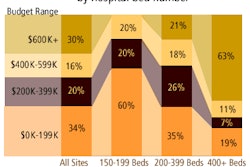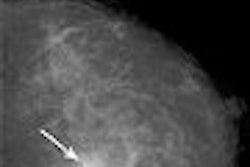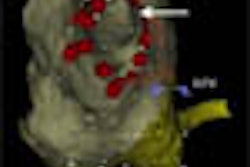TORONTO - Women who underwent uterine fibroid embolization (UFE) said that their quality-of-life benefits persisted three years after the procedure, researchers reported at the Society of Interventional Radiology (SIR) meeting last week.
"In addition, UFE with tris-acryl gelatin microspheres resulted in marked durable improvement in menstrual bleeding," said Dr. James Spies, professor and chairman of the department of radiology at Georgetown University Hospital in Washington, DC.
Based on the outcomes of a Ruta menorrhagia questionnaire, Spies said that 57% of patients at baseline said they had heavy menstrual bleeding, but at three years only 2% reported heavy bleeding. The Ruta score at baseline was 47.9 for the women who underwent UFE; after three years that score dropped to 20.1 (p < 0.001).
Health-related quality of life as measured by the SF-12 survey (multipurpose short-form generic measure of health status) was similarly improved after three years in both the physical and mental domains, he said. Physically, the baseline score improved from 45.5 to 53.3 postprocedure. The high score was maintained after three years at 53.6 (p < 0.001). The mental health SF-12 score rose from a baseline of 46.3 to 53.1 after three years (p < 0.001).
Spies said that reintervention was infrequent. Of the 102 women treated with UFE, one required another procedure in the three years since treatment. Two other women underwent myomectomy and five women had hysterectomies. Spies noted that the trial results were limited because about 35% of the patients who underwent UAE procedures were lost to follow-up.
Still, 64% of the patients completed the long-term follow-up. "Over the long term, UFE is effective and safe, with high levels of durable symptom control, improved health-related quality of life, and patient satisfaction," he said.
In a second study, Spies and co-authors tracked the economic outcomes of UFE. They compared health resource use (HRU) and medical costs of UFE (125 patients included) versus hysterectomy (2,836) or myomectomy (704) in 2002.
They found that UFE patients had significantly more in-patient hospitalizations, hospital outpatient visits, and physician office visits up to one year postprocedure. The median procedure cost for UFE was $5,968. The median procedure cost for hysterectomy was $7,707 and $7,299 for myomectomy.
Although the median cost was lowest for UFE, the sum total of all costs over 12 months was the same for all three procedures, the authors stated.
While the finances may be the same, UFE does offer other advantages, according to a third study by interventionalists from Pochon-gun, South Korea. They reported on clinical outcomes in 29 UFE patients after four years of follow-up. They found that the mean volume reduction rates of predominant fibroids were 62.5% at three and a half months and 27.7% at four years. Also at four years, the majority of patients reported marked symptom improvement for menorrhagia (16 of 19 cases), dysmenorrhea (seven of seven), and bulk-related symptoms (seven of 14).
By Edward Susman
AuntMinnie.com contributing writer
April 3, 2006
Related Reading
UAE with gelatin sponge particles offers long-term symptom control, March 29, 2006
Uterine fibroids associated with adverse obstetric outcomes, March 17, 2006
Post-UAE MRI demonstrates symptom control for adenomyosis, March 15, 2006
Existing research lacking dollars-and-cents assessment of uterine fibroids, November 23, 2005
Copyright © 2006 AuntMinnie.com



















